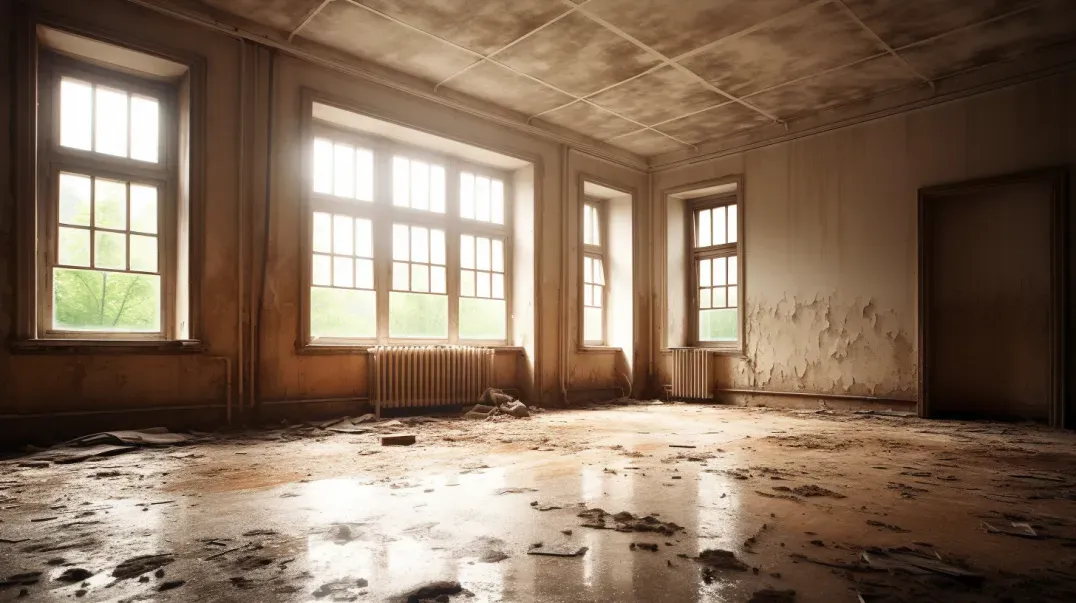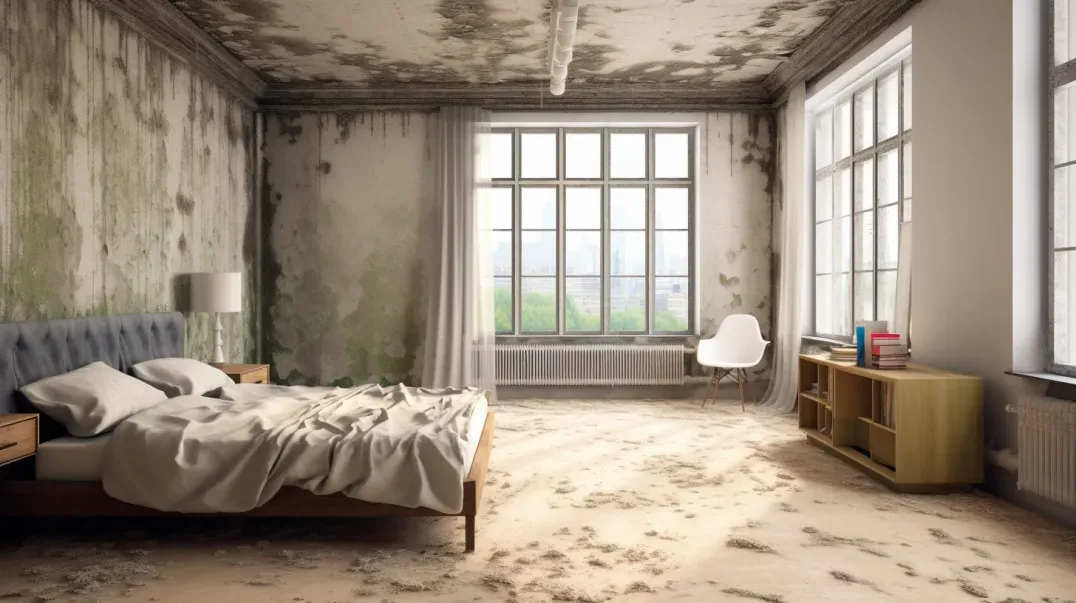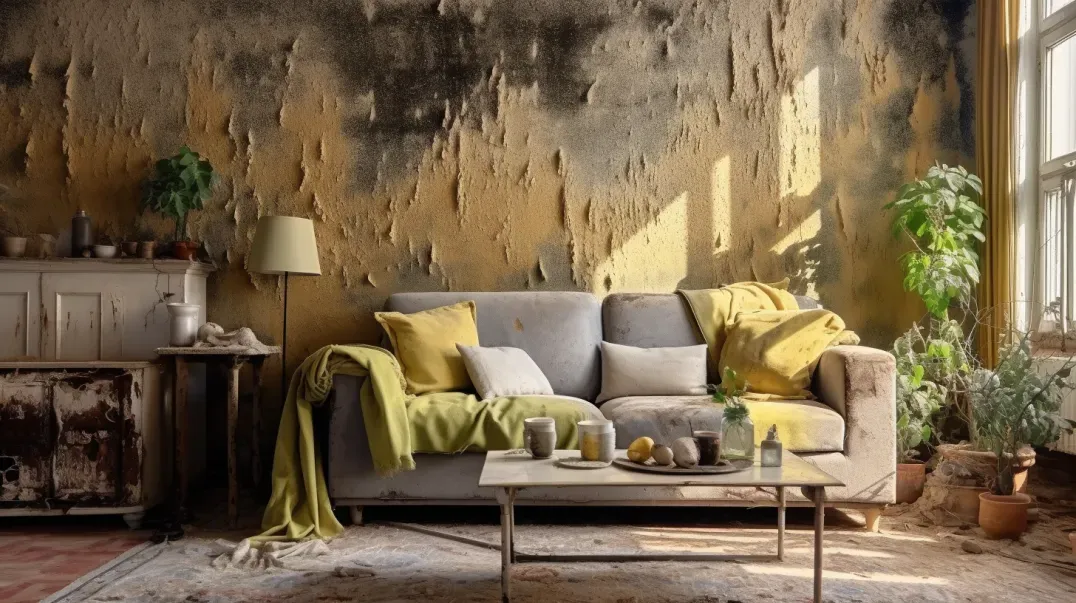The Health Risks of Mold in Buildings and the Importance of Remediation
Mold is ubiquitous—a pervasive issue that affects countless buildings, from homes and schools to offices and industrial sites. Its presence is not restricted by geography or climate; it can thrive in almost any environment where moisture and organic materials are present. This blog delves into the widespread nature of mold in various building environments, uncovering the challenges it presents and why understanding its prevalence is crucial for effective management and prevention.
In our journey through different settings, we explore how mold impacts each environment uniquely. From the damp basements of residential homes to the air-conditioned offices that may inadvertently support mold growth through HVAC systems, the risks vary but the underlying threat remains the same. We will look at the specific conditions that encourage mold growth in each type of building, the common types of mold encountered, and the broader implications of its presence on both the health of the building occupants and the structural integrity of the buildings themselves.
By shining a light on this often-overlooked problem, our goal is to equip readers with the knowledge needed to recognize mold, understand its implications, and take proactive steps towards its control and eradication. Stay with us as we uncover the silent but formidable challenge of mold, ensuring that you are better prepared to protect your environments from its subtle encroachments.
Understanding Mold Growth in Buildings
Mold in buildings is more than just a cosmetic concern—it is an indicator of moisture imbalance and can be a health hazard. This section explores the conducive conditions for mold growth and identifies the common types of mold found in building environments, providing insights into both their origins and their impacts.
Conditions that Promote Mold Growth
Mold thrives in environments that provide moisture, warmth, and a food source. Buildings, with their complex structures and varying microclimates, often provide these perfect conditions unintentionally. Key factors that promote mold growth include:
- Moisture: The most critical factor for mold growth. Common sources of moisture in buildings include leaks from roofs or plumbing, condensation on windows and pipes, and high humidity levels that are not adequately controlled.
- Warmth: Mold generally prefers temperatures between 60 and 80 degrees Fahrenheit, which are typical of indoor environments in many climates.
- Organic Materials: Mold feeds on organic materials such as wood, paper, carpet, and insulation. These materials are abundant in building constructions and furnishings.
Understanding these conditions helps in diagnosing mold problems and forms the basis for developing effective strategies to prevent mold growth.
Common Types of Mold Found in Buildings
In the diverse ecosystem of a building, certain molds are encountered more frequently. Each type has preferences for certain conditions and locations within buildings:
- Aspergillus: Commonly found on walls, insulation, and paper products, Aspergillus can thrive in less moist environments compared to other molds. It is known for its potential to cause respiratory infections and allergic reactions.
- Cladosporium: This type prefers cooler temperatures and is often found on fabrics and wood surfaces. It can cause allergic reactions such as rashes and hay fever-like symptoms.
- Stachybotrys, also known as black mold: Notoriously toxic, this mold requires a high moisture content to grow and is often found in areas with water damage or chronic dampness. It is associated with severe health risks, including respiratory problems and immune system suppression.
These molds, while common, represent a serious health threat if allowed to proliferate. Understanding their specific habitats and growth preferences is crucial for effective mold management in buildings.
Health Risks Associated with Mold Exposure
Mold exposure in indoor environments can have a range of adverse health effects, from immediate allergic reactions to severe long-term health issues. This section discusses the immediate and prolonged health impacts of mold exposure, shedding light on the risks and the importance of addressing mold problems efficiently.
Immediate Health Effects
Mold exposure can quickly manifest in various allergic reactions and respiratory symptoms. Immediate health effects include:
- Allergic Reactions: These can range from sneezing, runny nose, and red eyes to skin rashes. Mold spores can act as allergens that trigger these responses upon inhalation or skin contact.
- Respiratory Symptoms: Exposure to mold can cause coughing, wheezing, and throat irritation, particularly in individuals with asthma or other respiratory conditions.
Vulnerable Groups: Certain individuals are particularly sensitive to mold:
- Children: Their developing respiratory systems make them more susceptible to the harmful effects of mold.
- Elderly: Older adults often have weakened immune systems and pre-existing health conditions that can be exacerbated by mold exposure.
- Individuals with Respiratory Conditions: Those with asthma, allergies, or other respiratory issues are at increased risk.
- Immunocompromised Individuals: People with weakened immune systems, such as those undergoing chemotherapy, are more vulnerable to mold-related health complications.
Understanding these risks is crucial for protecting the health of these sensitive groups and for informing property maintenance and care.
Long-Term Health Impacts
The long-term effects of mold exposure can be severe and debilitating. Prolonged exposure can lead to more significant health issues, including:
- Chronic Respiratory Conditions: Continuous exposure to mold can contribute to the development of chronic bronchitis, asthma, and other respiratory diseases.
- Immune System Disorders: Some molds produce mycotoxins that can suppress the immune system, leading to increased susceptibility to infections and diseases.
Evidence from Health Studies:
- Numerous studies and expert statements support these findings. For example, research published by the Institute of Medicine has linked indoor mold exposure to respiratory illness in otherwise healthy children.
- The World Health Organization has highlighted that prolonged exposure to mold increases the risk of respiratory disease.
These long-term health implications underscore the need for prompt and effective action to address mold issues in living and working environments.
The Importance of Mold Remediation
Addressing mold growth in a timely and effective manner is crucial for maintaining a healthy indoor environment and structural integrity of buildings. This section explores the benefits of prompt mold removal and discusses the differences between professional remediation and DIY efforts.
Benefits of Timely Mold Removal
Prompt Action Mitigates Health Risks: The sooner mold is addressed, the less chance it has to spread and exacerbate potential health issues. Immediate remediation helps prevent the onset of allergic reactions, respiratory problems, and other health conditions associated with mold exposure.
Early vs. Delayed Remediation:
- Early Remediation: Taking quick action to remediate mold can limit the extent of damage to building materials and reduce the complexity and cost of the remediation process. It also minimizes exposure time, thereby reducing health risks to occupants.
- Delayed Action: Delaying mold remediation can lead to extensive mold growth, which can permeate deeper into building materials and become significantly harder to remove. Over time, this can lead to severe structural damage, costly repairs, and serious health problems for occupants, including chronic respiratory conditions and weakened immune systems.
The contrast between the outcomes of early and delayed remediation efforts underscores the importance of addressing mold issues as soon as they are detected.
Professional vs. DIY Remediation
Risks of DIY Mold Removal:
- Attempting to remove mold yourself can lead to inadequate removal and cross-contamination, spreading mold spores to other parts of the building.
- DIY methods often fail to address the underlying moisture problem, leading to recurrent mold growth.
- Without proper safety gear, DIY efforts can expose homeowners to harmful mold spores, posing significant health risks.
When to Call Professional Remediation Services:
- Serious Infestations: Professional services are crucial when dealing with large-scale or deeply embedded mold infestations, especially those involving toxic mold like Stachybotrys.
- Health and Safety: If the household includes vulnerable individuals, such as children, the elderly, or those with respiratory conditions, professional remediation is recommended to ensure safety and thoroughness.
What Professional Services Entail:
- Professional mold remediation services begin with a thorough assessment, including moisture mapping and mold testing, to identify the extent and type of mold present.
- Remediation experts use advanced techniques and equipment to safely contain and remove mold, including HEPA air scrubbers and personal protective equipment to prevent cross-contamination.
- Professionals not only remove the mold but also take measures to correct moisture problems and apply preventatives to discourage future growth.
Remediation Strategies and Best Practices
Effectively dealing with mold requires a structured approach that encompasses thorough assessment, precise techniques, and diligent verification. This section details the critical steps and methodologies employed in professional mold remediation to ensure the safety and health of building occupants and the integrity of the structure.
Assessment and Evaluation
Professional Mold Assessment Steps:
- Initial Inspection: Professionals begin with a comprehensive visual inspection using tools such as moisture meters and infrared cameras to determine the extent of the mold infestation and identify moisture sources.
- Sampling and Testing: In some cases, air and surface samples are collected to test for mold types, particularly when toxic mold is suspected or to understand the air quality implications.
- Extent of Infestation: Determining the scale of mold growth helps in planning the remediation scope—whether it’s confined to one area or spread throughout the property.
Importance of Thorough Evaluation:
- A detailed evaluation is critical to developing an effective remediation plan. It helps in identifying the root cause of mold growth, such as leaks or humidity issues, ensuring that these are addressed to prevent future occurrences.
- Understanding the types of materials affected and the degree of contamination helps in deciding the appropriate techniques and safety measures to be employed during the remediation process.
Effective Remediation Techniques
Key Techniques Used in Mold Remediation:
- Containment: To prevent the spread of mold spores during the cleanup process, the affected area is sealed off using plastic sheeting. Negative air pressure is maintained to contain the mold within the remediation zone.
- Air Filtration: HEPA filters are used in air scrubbers and vacuums to clean the air of mold spores and other particulates, ensuring that the air quality is maintained during and after the remediation process.
- Material Removal: Infested materials such as drywall, insulation, and carpeting are removed and disposed of safely. Non-porous materials are cleaned with antimicrobial agents to kill remaining mold.
Post-Remediation Verification:
- After the remediation, a critical step is to verify that all mold has been effectively removed and that the original moisture problem is resolved.
- This may involve follow-up testing and inspection to confirm that mold levels have returned to normal and that no residual moisture remains.
- Post-remediation verification ensures the long-term effectiveness of the remediation efforts and prevents the recurrence of mold growth.
Preventing Mold Recurrence
Preventing mold recurrence is not just about addressing the immediate presence of mold; it involves adopting long-term strategies that ensure the health and safety of building environments. This section provides maintenance tips and structural measures to help building managers and occupants maintain mold-free spaces.
Maintenance Tips for Mold Prevention
Regular Building Maintenance Recommendations:
- Humidity Control: Maintain indoor humidity levels between 30% and 50% to discourage mold growth. Utilize dehumidifiers, air conditioners, and humidity monitors to manage air moisture effectively.
- Proper Ventilation: Ensure that kitchens, bathrooms, and laundry areas are well ventilated. Use exhaust fans to expel moisture to the outside and not into attics or crawl spaces.
Routine Inspections and Early Detection:
- Inspection Frequency: Conduct bi-annual or annual inspections of the property, especially in areas prone to dampness like basements, bathrooms, and areas around HVAC systems.
- Signs of Mold: Look for visible signs of mold, musty odors, water stains on walls or ceilings, and any signs of water damage. Early detection of these signs can lead to quicker interventions, reducing the potential for extensive mold growth.
Long-Term Measures to Protect Building Health
Strategies for Structural Improvements:
- Waterproofing: Apply waterproofing measures to foundations, basements, and other areas prone to moisture. Use sealants around windows and doors to prevent water ingress.
- Landscaping Adjustments: Ensure that the ground slopes away from the building foundation to prevent water accumulation that can lead to dampness and mold growth.
Ongoing Education on Mold Risks and Prevention:
- Educational Programs: Implement regular training sessions for building managers and staff on mold prevention techniques and the health risks associated with mold exposure.
- Information Dissemination: Distribute informational materials to occupants, explaining how their daily activities can contribute to moisture control and mold prevention. Encourage reporting of water leaks and signs of mold to management promptly.
FAQs
Contact Lowcountry Crawlspaces Today!
Lowcountry Crawlspaces will do everything we can to ensure your experience with us is excellent.
Request A FREE Estimate
CHECKOUT RECENT POST



Schedule Your FREE Crawl Space Evaluation Today
There Is No Crawl Space Job We Can’t Fix!




